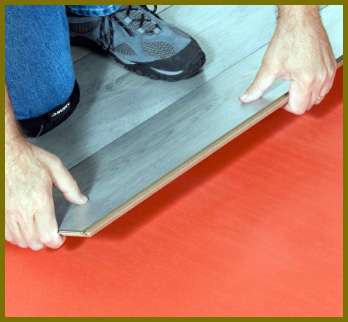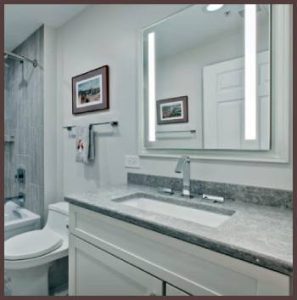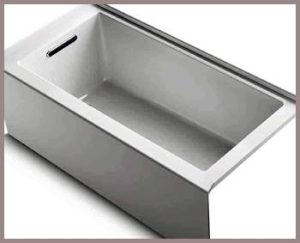You’re about to embark on a flooring renovation journey, and you want to make the right decision when it comes to choosing the best underlayment.
Today, we’re going to talk about two of the industry’s leading products: Floor Muffler and QuietWalk Flooring Underlayment. Grab a cup of coffee, and let’s dive into this captivating story of soundproofing, comfort, and quality.
A Brief Comparison Table
| Characteristic | Floor Muffler Underlayment | QuietWalk Underlayment |
| Sound Reduction | IIC up to 74, STC up to 73 | IIC up to 71, STC up to 66 |
| Material and Composition | Dense, closed-cell polypropylene foam | Recycled fibers |
| Moisture Protection | Highly effective moisture barrier | Reliable moisture barrier |
| Thermal Insulation | Limited thermal insulation | Good thermal insulation |
| Compatibility | Laminate, engineered hardwood, and LVP flooring (not recommended for nail-down hardwood) | Laminate, floating engineered wood, and LVP flooring (not recommended for nail-down hardwood) |
| Price | Typically higher | Typically lower |
Differences Between Floor Muffler And QuietWalk Flooring Underlayment
Choosing the right underlayment is crucial for a successful flooring project, as it directly impacts the longevity, comfort, and noise reduction of your floors. Two popular contenders in the world of underlayment are Floor Muffler and QuietWalk.
Let’s delve into their differences and understand which product might be the right fit for your needs.
- Sound Reduction Capabilities

One of the most critical factors to consider when selecting underlayment is its soundproofing ability.
Both Floor Muffler and QuietWalk excel in this department, but there are some differences in their ratings:
Floor Muffler: This underlayment boasts an impressive Impact Insulation Class (IIC) rating of up to 74 and a Sound Transmission Class (STC) rating of up to 73, making it one of the quietest options on the market.
QuietWalk: While not quite as soundproof as Floor Muffler, QuietWalk still offers excellent sound reduction with an IIC rating of up to 71 and an STC rating of up to 66.
When it comes to noise reduction, Floor Muffler has a slight edge over QuietWalk.
- Material and Composition
Floor Muffler and QuietWalk are made from different materials, which affects their performance in various aspects.
Floor Muffler: This underlayment is made of dense, closed-cell polypropylene foam, which contributes to its excellent soundproofing and moisture barrier properties.
QuietWalk: QuietWalk is composed of recycled fibers, which gives it an eco-friendly edge. The material also provides good thermal insulation and compression resistance.
While both underlayments offer similar performance, the choice between the two may depend on whether you prioritize environmental friendliness or a specific material type.
- Moisture Protection

Moisture protection is essential in preventing damage to your flooring.
Both Floor Muffler and QuietWalk come equipped with built-in moisture barriers.
Floor Muffler: The closed-cell polypropylene foam provides a highly effective moisture barrier, protecting your floors from moisture seepage.
QuietWalk: Its recycled fiber composition offers a reliable moisture barrier, though it might not be as robust as Floor Muffler’s.
If moisture protection is a primary concern, Floor Muffler might be a slightly better option.
- Thermal Insulation
A good underlayment can help regulate the temperature of your floors, providing added comfort.
Floor Muffler: While it does offer some degree of insulation, thermal regulation is not one of Floor Muffler’s strong suits.
QuietWalk: The recycled fiber composition of QuietWalk gives it an advantage in thermal insulation, helping to keep your floors warmer in winter and cooler in summer.
If thermal insulation is a priority for you, QuietWalk may be the better choice.
- Compatibility with Flooring Types
Both Floor Muffler and QuietWalk are versatile and compatible with various flooring types, but there are some distinctions to note:
Floor Muffler: This underlayment is suitable for laminate, engineered hardwood, and luxury vinyl plank (LVP) flooring. However, it is not recommended for use with nail-down hardwood floors.
QuietWalk: QuietWalk is designed for laminate, floating engineered wood, and LVP flooring. Like Floor Muffler, it is not compatible with nail-down hardwood floors.
It’s essential to choose an underlayment that is compatible with your specific flooring type to ensure optimal performance and longevity.
Meet the Floor Muffler: The Silence Expert

Floor Muffler is a high-performance underlayment that combines sound reduction, moisture protection, and stability to create a solid foundation for various types of flooring, including laminate, engineered hardwood, and luxury vinyl plank.
This underlayment is made of a dense, closed-cell polypropylene foam that effectively muffles sound, hence its name.
Pros of Floor Muffler
- Outstanding Sound Reduction: Floor Muffler is known for its exceptional soundproofing capabilities, with an Impact Insulation Class (IIC) rating of up to 74 and a Sound Transmission Class (STC) rating of up to 73.
- Moisture Barrier: This underlayment comes with a built-in moisture barrier that prevents moisture from seeping through and damaging your flooring.
- Easy Installation: Floor Muffler is lightweight and easy to handle, making installation a breeze.
Cons of Floor Muffler
- Higher Cost: Floor Muffler is often priced higher than other underlayment options, which could be a deal-breaker for some budget-conscious homeowners.
- Not Suitable for All Floors: Although it’s compatible with various floor types, Floor Muffler is not recommended for use with nail-down hardwood floors.
Introducing QuietWalk: The Comfort Provider
QuietWalk is a premium flooring underlayment made from recycled fibers that offers excellent soundproofing, moisture protection, and insulation. It’s designed for use with laminate, floating engineered wood, and luxury vinyl plank flooring.
Pros of QuietWalk
- Impressive Soundproofing: QuietWalk boasts an IIC rating of up to 71 and an STC rating of up to 66, ensuring a peaceful environment.
- Environmentally Friendly: This underlayment is made from recycled materials and is certified by SCS Global Services, reflecting its commitment to sustainability.
- Thermal Insulation: QuietWalk provides added insulation, keeping your floors warmer in the winter and cooler in the summer.
- Compression Resistance: Its dense composition ensures that it won’t compress or break down over time, maintaining its soundproofing and insulating properties.
Cons of QuietWalk
- Not Compatible with Nail-Down Floors: Like Floor Muffler, QuietWalk is not recommended for use with nail-down hardwood floors.
- Slightly Less Soundproofing: While QuietWalk’s soundproofing is still excellent, it is slightly lower than that of Floor Muffler.
Analyzing the Pros and Cons
Based on our exploration, both Floor Muffler and QuietWalk offer exceptional soundproofing, moisture protection, and durability. However, Floor Muffler has a slight edge in sound reduction, while QuietWalk takes the lead in environmental friendliness and thermal insulation. Ultimately, your choice will depend on your priorities and budget constraints.
Also Read: Is Celect Siding Worth It?
FAQs: Unraveling the Mysteries of Underlayment
Now that we’ve thoroughly compared Floor Muffler and QuietWalk, let’s tackle some frequently asked questions about underlayment.
The best underlayment for hardwood floors will depend on the type of hardwood and your specific needs. For floating engineered hardwood floors, both Floor Muffler and QuietWalk are excellent options. For nail-down hardwood floors, a felt or cork underlayment is generally recommended.
Yes, QuietWalk is worth considering for your flooring project. It offers impressive soundproofing, moisture protection, and thermal insulation, and is made from environmentally friendly, recycled materials. However, if sound reduction is your top priority, you might want to explore Floor Muffler as well.
Floor Muffler is among the quietest underlayments for laminate floors due to its high IIC and STC ratings. However, QuietWalk is also an excellent option for sound reduction and offers additional benefits, such as thermal insulation and environmental friendliness.
QuietWalk Plus is an upgraded version of the original QuietWalk underlayment, designed specifically for use with luxury vinyl plank (LVP) flooring. It features enhanced moisture protection and is thinner than the original QuietWalk, making it more suitable for LVP installations.
The best moisture barrier for hardwood floors will depend on the specific requirements of your flooring project. Some popular options include 6-mil polyethylene sheeting, moisture-resistant underlayment products like Floor Muffler or QuietWalk, and specialized vapor barrier underlayments like Visqueen Vapor Block. Always consult the manufacturer’s guidelines for your flooring to determine the best moisture barrier solution.
The End Of The Underlayment Saga
Our journey through the world of Floor Muffler and QuietWalk Flooring Underlayment has come to an end, and we hope that we’ve provided you with valuable insights to make an informed decision.
Both underlayments offer a range of benefits and are strong contenders in the flooring market. Whichever you choose, may your floors be quiet, comfortable, and long-lasting!




